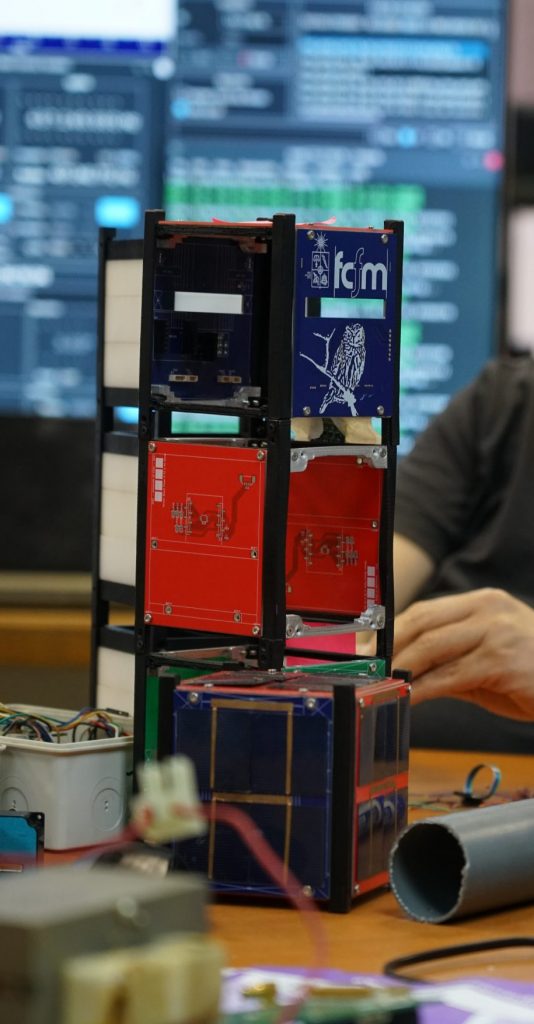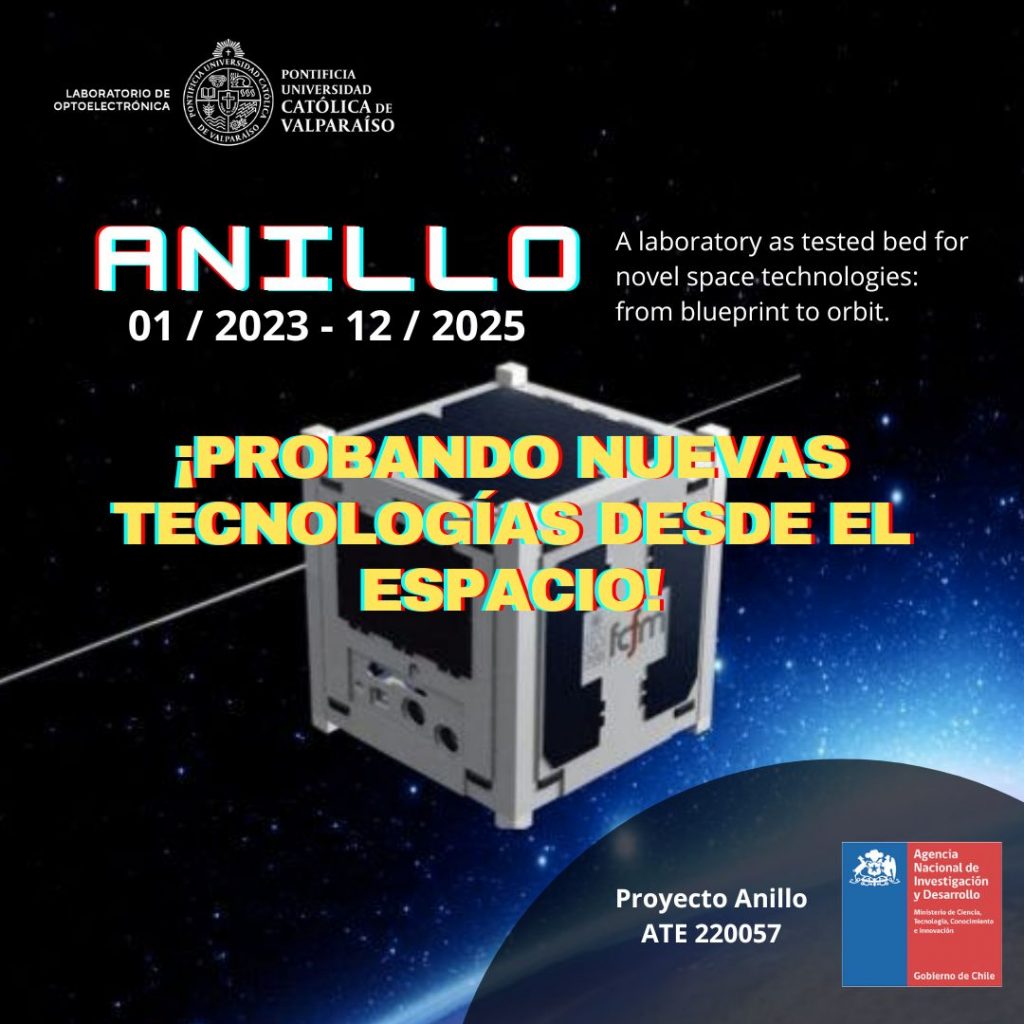A laboratory as tested bed for novel space technologies: from blueprint to orbit – is the Anillo Project ATE 220057 that got US $750K in funding and is going to last for 3 years, where Optolab participates as a principal collaborator.
Directed by Professor Marcos Díaz, academic responsible for the Space and Planetary Exploration Laboratory (SPEL) from the Faculty of Physical Sciences and Mathematics of Universidad de Chile and has our Professor Esteban Vera as a collaborator and principal researcher from the PUCV’s School of Electrical Engineering.

There has been a tendency for years to miniaturization and standardization of technological components making different objects more accessible. The phone, for example, has evolved into a small device that we can carry in our pockets.
The same thing has happened with satellite systems, which have evolved into standardized systems, that are way more compact like the one presented by the standard CubeSat, which has proved to be one of the most affordable and agile platforms for the development of scientific and commercial missions.
Universidad de Chile has been leading the study and development of space missions based on CubeSats in our country. This project focuses on the study of the development chain of a scientific mission based on a satellite CubeSat type of 10 kg and 6 liters (or 6 units) that will allow the photometry of the Moon, as a preliminary exercise to astronomical studies.
The photometric measurements using the Earthshine method could provide precise estimations of the Earth’s albedo, a key parameter of the radiative balance of our planet, that is very important to model global climate change.
Our contribution as Optolab to this project is the modeling, design, and implementation of multispectral cameras to do remote sensing from satellites in orbit. Also, we will develop the first prototypes of optic communication that are expected to be evaluated in this mission.
In this manner, we’ll be in charge of the experiments related to optic communication and the evaluation test of the designed systems. This besides the support we’ll give with the outreach of the project, to let everyone know about the impact it will have over these 3 years, highlighting its principal goals once we hit them.
We hope the knowledge developed in this project serves as a guide to the new national space program. Both for the knowledge that is expected to be generated, as well as the formation of human capital in this area.

